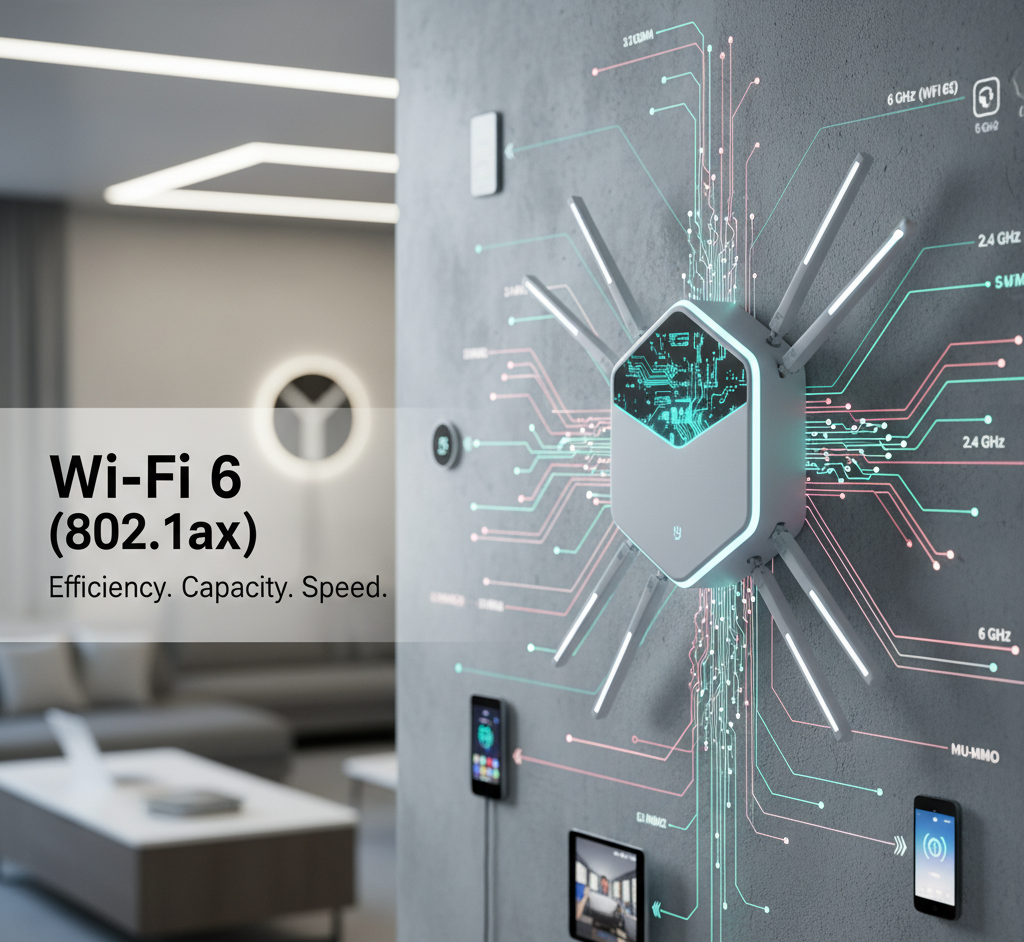Wi-Fi access points (APs) use generations of the IEEE 802.11 wireless standard. The two most common recent standards are Wi-Fi 5 (802.11ac) and the current standard, Wi-Fi 6 (802.11ax). While Wi-Fi 5 focused primarily on raw speed, Wi-Fi 6 introduced significant efficiencies to handle the explosion of connected devices.
Wi-Fi 5 (802.11ac) Access Points 🚀
Introduced in 2013, Wi-Fi 5 represented a major leap over its predecessors, prioritizing high throughput.
Standard: IEEE 802.11acMaximum Speed: Theoretically up to 6.9 Gbps (though real-world speeds are much lower, typically a few Gbps).
Key Feature: Introduced Downlink Multi-User MIMO (MU-MIMO), which allows the AP to transmit data to multiple compatible devices simultaneously, reducing wait times.
Wi-Fi 6 (802.11ax) Access Points 📶
Released in 2019, Wi-Fi 6 focuses on efficiency and capacity to improve performance in crowded network environments, such as smart homes, offices, and public spaces.
Standard: IEEE 802.11ax
Maximum Speed: Theoretically up to 9.6 Gbps, which is about a 40% increase over Wi-Fi 5.Frequency Bands: Operates on both the 2.4 GHz and 5 GHz bands, offering flexibility for both range and speed.
Note: An extension, Wi-Fi 6E, adds support for the new, less-congested 6 GHz band.Key Efficiency Features:
OFDMA (Orthogonal Frequency Division Multiple Access): This is a key improvement that divides a single channel into smaller resource units (sub-channels). This allows an AP to communicate with multiple devices simultaneously on the same channel, significantly increasing efficiency and reducing latency, especially for small packets of data.Improved MU-MIMO: Supports both uplink and downlink (transmitting to and receiving from multiple devices), and increases the number of streams compared to Wi-Fi 5.
Target Wake Time (TWT): Allows the AP to schedule check-in times with devices. This lets devices remain in sleep mode longer, improving battery life for phones and IoT devices.
1024-QAM (Quadrature Amplitude Modulation): Increases data per transmission, leading to faster raw speeds.
Summary of Differences
Feature Wi-Fi 5 (802.11ac) Wi-Fi 6 (802.11ax)
Focus Raw speed Capacity and efficiency in dense environments
Max Theoretical Speed ≈ 6.9 Gbps ≈ 9.6 Gbps
Key Technology Downlink MU-MIMO OFDMA, Bidirectional MU-MIMO, TWT
Frequency Bands Primarily 5 GHz 2.4 GHz and 5 GHz (6 GHz for 6E)
Efficiency in Density Lower Much Higher
Power Consumption Higher for devices Lower (due to TWT)
While Wi-Fi 5 Access Points still offer fast speeds for a small number of devices, Wi-Fi 6 APs are the modern standard for homes and businesses with numerous connected devices, offering higher total network capacity, better efficiency, and improved battery life.
